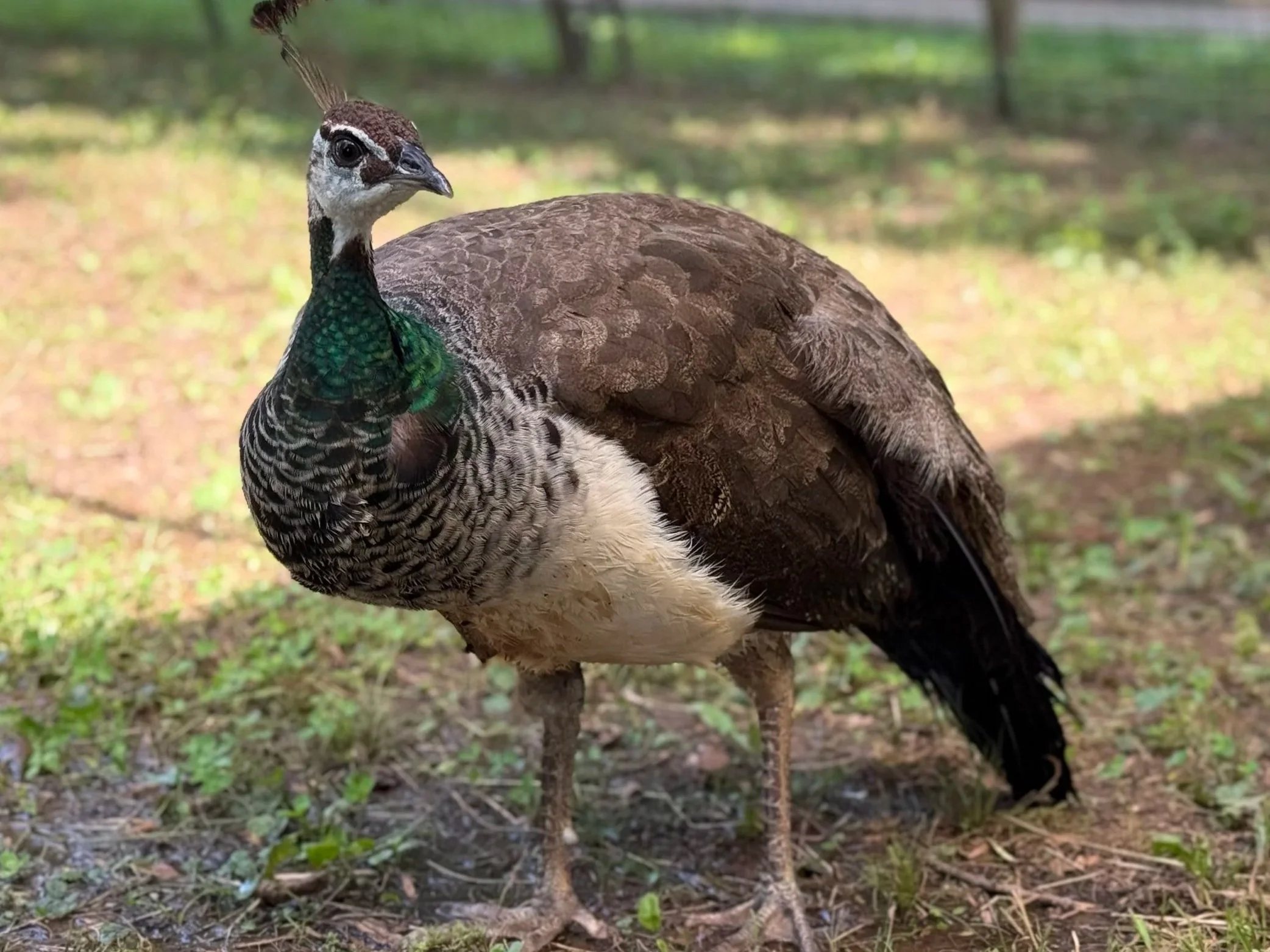Peafowl
Scientific Name: Pavo Cristatus
Habitat: Deciduous forests, open forests, urban gardens and parks, and agricultural fields
Diet: Omnivore
Weight: 6-13 lbs
Conservation Status: Domesticated
Range: Native to India, Sri Lanka, and Pakistan
Lifespan: 15-25 years
Size: 39-45 inches, up to 70 inches with tail
Peafowl are large, ground dwelling birds. Adult males possess a large, ornate train of long feathers covered with an eye-like pattern. This train can extend well over a yard, and is displayed in courtship rituals. Birds of both sexes have a crest of upright feathers on the crown of their heads. Male birds are called peacocks, and females are peahens. Males mate with multiple females, and they perform dramatic displays of their train, fanning it into a semicircle while vibrating the feathers to produce a rustling sound. They are highly vocal, particularly during the breeding season, emitting loud, distinctive calls that serve to attract mates and signal territorial presence. Breeding occurs in the warmer months, typically from spring through summer. Females lay 3 to 6 eggs in shallow ground nests, which they incubate for about 27 to 30 days. After hatching, the chicks are capable of walking and feeding within hours, and are reared solely by the female.
Indian Blue Peafowl
Indian Blue Peacocks, the most recognizable and widely distributed subspecies of peafowl, are renowned for their extravagant plumage and iridescent coloration. Adult males possess a shimmering blue head and neck, with a crest of upright feathers on the crown and a metallic green and bronze back
Females are more modestly colored with earthy brown and green tones, lacking the train but still retaining the elegant crest.
Black Shouldered Peafowl
Black-shouldered peacocks are a color mutation of the Indian blue peafowl. They exhibit a striking appearance that differs from the typical blue peafowl primarily in their wing coloration. Males display iridescent blue heads and necks like the standard variety but have creamy or white body plumage with bold black shoulder feathers, creating a strong contrast.
Females are more modestly colored with earthy brown and green tones, lacking the train but still retaining the elegant crest.




